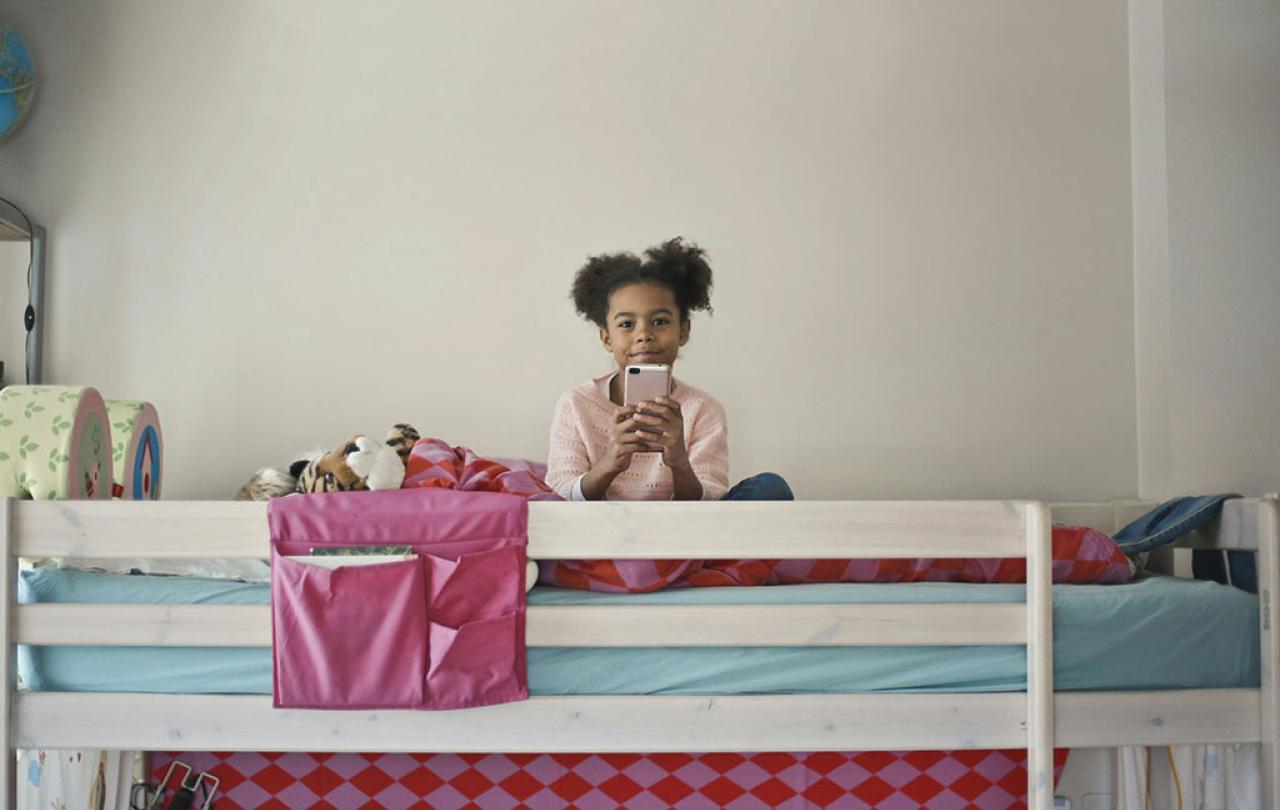
It’s common these days to hear about social anxiety, health anxiety, or climate anxiety – but I think I can see that a new pathology is beginning to emerge: anxiety anxiety. This is where parents, politicians, academics, or just members of society in general, start to get anxious about the fact that everybody is anxious. Diagnosis rates of clinical anxiety have shown a steep increase in the past decade, and numbers, we assume, don’t lie.
Of the many outcomes of ‘anxiety anxiety’, one is going to be people who (with the absolute best intentions) want to suggest solutions. One such person is Jonathan Haidt, with his book The Anxious Generation: How the Great Rewiring of Childhood is Causing an Epidemic of Mental Illness.
From the spaceman on the cover to the opening vignette about sending our children to Mars, Haidt’s premise is clear: smartphones are the alien invaders of our society. These electronic parasites are feasting on the brain matter of our young people, directly causing what is now an epidemic of clinical anxiety and depression.
I’m quite ready to read a sensible analysis of the impact of smartphone culture on mental health, so I was disappointed to find that Haidt’s book falls so far short of that. From a scientific perspective, the argument is a barrage of statistics, arranged to the tune of ‘correlation equals causation’. Given Haidt’s seniority in his field, this approach is surprisingly unsubtle, something which has already been heavily criticised by peer review. Numbers, it seems, do lie – or at least they can be easily curated to prove your point.
But even if we accept Haidt’s point – which is that rates of smart-phone use (particularly social media) and rates of young people being diagnosed with anxiety disorders have increased over the same time period – what can be done? Haidt’s solution is to ban young people from owning smartphones at all until the age of 14, and from using social media until the age of 16, or even better 18. In this way, owning and managing one’s own device and its access becomes a rite of passage into adulthood. But note: whilst parents are urged to implement these unyielding boundaries for their children’s device-habits, Haidt does not ask grown-ups to make any changes to their own. Adults can continue with their current norms of smartphone use, ostensibly because their brains are fully developed, and they therefore have the maturity to handle their own risk to mental health.
Smartphones are not aliens – they were designed by humans, and are willingly bought by humans, in response to the human need to communicate.
Of course, it does not suit Haidt’s argument to analyse why adult mental health is also seeing an increase in diagnosis of anxiety disorders. It may be true to say that rates are rising more quickly amongst young people, but there is still no consensus as to how much of that can be attributed to young people simply being better informed about mental health and more empowered to seek help than the generations before them. Noticeably, young people today have a language to talk about anxiety that simply didn’t exist when I was a teenager in the 1990s, and ironically enough, it is social media that has made that possible. Although suicide rates are on the rise, they are still quite significantly lower among young people than they are for those aged over 35, and it should be noted that a proven pathway to suicide prevention amongst young people is access to self-help via smartphone apps.
So whilst I am quite ready to believe that smartphone culture is one of many factors impacting the health and wellbeing of young people today, I think characterising smartphones as alien invaders, or as invasive parasites that have been selectively bred by Silicon Valley billionaires to infest the minds of our young people, seems to be a disingenuous response – and one that only serves to increase parental anxiety by implying that smartphones are sly, sentient beings, and out of our control.
Smartphones are not aliens – they were designed by humans, and are willingly bought by humans, in response to the human need to communicate and a perfectly natural human desire to seek out entertainment and culture. True, technology and software are developed by billionaires, and marketing and algorithms can influence our choices – but at the end of the day, any developer will tell you that products only ever evolve in response to what the market demands. Adults: we have the money in our pockets; we are the market.
As a more empathetic and intelligent generation, it seems they could probably teach us a few things about how to harness smartphone culture.
In other words, we (the adults) selectively bred these ‘aliens’ ourselves – and rather than try (and no doubt fail) to lock up our experiment in a lab (or, as Haidt suggests, a lockable phone-pouch) we, the adults, have more than enough agency to continue that process of developing smartphones into devices that meet needs and provide entertainment in the way that they were always meant to do. In his defence, Haidt does refer to this approach briefly, but still only with a view to making the phones be for ‘us’ (the adults) and not ‘them’ (the young people) by removing content that appeals to a younger audience. To me feels like we are victim shaming the youth of today for the fact that they have inherited a problem created by their parents.
One day when Jesus was teaching a crowd of followers, he advised them “Why do you look at the speck of sawdust in your brother’s eye and pay no attention to the plank in your own eye? How can you say to your brother, ‘Let me take the speck out of your eye,’ when all the time there is a plank in your own?” His point was about hypocrisy – it is far easier to judge someone else’s behaviour than it is to take responsibility for our own. Where did any of us last read or hear terrifying information about the decline in young people’s mental health? Was it on our smartphones?
Here are a few things that Haidt’s selection of statistics doesn’t say about the youth of today. They are the most compassionate and empathetic generation that we have seen for decades (Konrath et. al., 2023). They are able to wait longer for rewards than their parent’s generation (Protzko, 2020), they are also less lazy, less narcissistic, more cooperative and more intelligent (Kriegel, 2016). In addition, whilst obvious damage is done by ‘filters’ on Instagram photos, making some young people strive for unattainable standards of beauty, it was the previous generation of smartphone users who began this trend, and it is the current generation of young people who can be credited with the #nofilter #nomakeup countertrends. This same generation is now fuelling the rise of insurgent social media sites such as Bereal, which emphasise the importance of authentic photos and meaningful connection with friends online.
Overall, perhaps instead of restricting and controlling our young people’s online lives, as Haidt would have us do, we ought to be talking to them? As a more empathetic and intelligent generation, it seems they could probably teach us a few things about how to harness smartphone culture and develop it towards solutions to the problems that we ourselves created.





